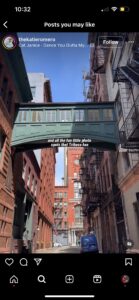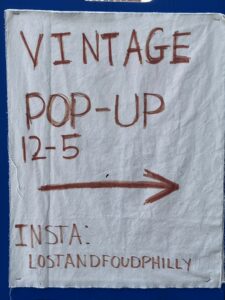Points of Exclusion
All aspects of media feature elements of exclusion, whether it be intentional or not. For the deliverables of my project, I will focus on mitigating points of exclusion, by identifying and adapting mismatched interactions.
Points of Exclusion: Who is Impacted and How Can We Mitigate Setbacks?
The nature of my deliverables is heavily rooted in the ability to see. My Instagram page, marketing materials, and design book all rely on one’s ability to see the imagery and video content I produce. While I will produce alt text for those with sight impairments, the text realistically cannot fully capture what the image or video displays. This is a point of exclusion because those who cannot see, or have sight impairments, will not be able to experience the content I produce in the way that I or Jenny intend for it to be. Furthermore, I cannot create alt text for marketing materials, such as business cards. That deliverable will unfortunately exclude those who cannot see, whereas my other deliverables at least have an alternative option. Additionally, aside from those with medical impairments to sight, my content may not be accessible to all depending on the environment someone is in when they view the social media page, marketing materials, or design book. For example, if someone is outside on a sunny day, their device may not be bright enough to comfortably view content. If someone who typically wears glasses forgets them at home on a day they visit the shop and receive a business card, their ability to fully read the card may be negatively affected.

Example of Subtitles via Instagram: @thekatieromeo
In addition to sight, the Instagram account also relies on the ability to hear. I am planning on including video content with music or voice audio in the background. While I can include subtitles for video content, viewers with hearing impairments will not be able to hear the instrumentation or hear the voices of speakers. This may negatively impact the way they perceive the content. This point of exclusion also extends to those who do not have hearing impairments. For example, if someone is on a loud train or at a crowded market, they most likely will not be able to listen to video content at full volume and decipher what is being said. By accounting for those with medical hearing impairments, I am subsequently accounting for those with temporary hindrances to hearing.
Distribution
My project will be distributed publicly on Instagram– meaning anyone can access the account for free, if they have access to a device with internet. As of now, the Lost and Found Vintage Instagram account has 2,547 followers. When posts are made on the account, viewers have the ability to share content. This will hopefully cast a wide net of people for the

Lost and Found Vintage entrance sign with Instagram handle written out.
account to reach. On the entrance sign to the shop, Jenny has the Instagram account handle written so all shoppers will see the account name upon entering the shop. In addition to these efforts, I hope to create updated business cards for Jenny to attach to all paper bags that hold purchased items. This is a second opportunity for the account to reach shoppers if they didn’t pay attention to the sign out front. I also will be speaking to Jenny about potentially collaborating with local businesses in the area to promote one another’s company. For example, Menagere cafe is a new coffee shop right around the corner for Lost and Found and I think they would be good collaborators.
By the end of the semester, I hope that these efforts reach young shoppers (18-30) in the Philadelphia area. Many of Jenny’s customers are loyal customers from over 20 years ago, therefore I hope to market to a younger audience to welcome a new generation of shoppers to Lost and Found.
Leave a Reply